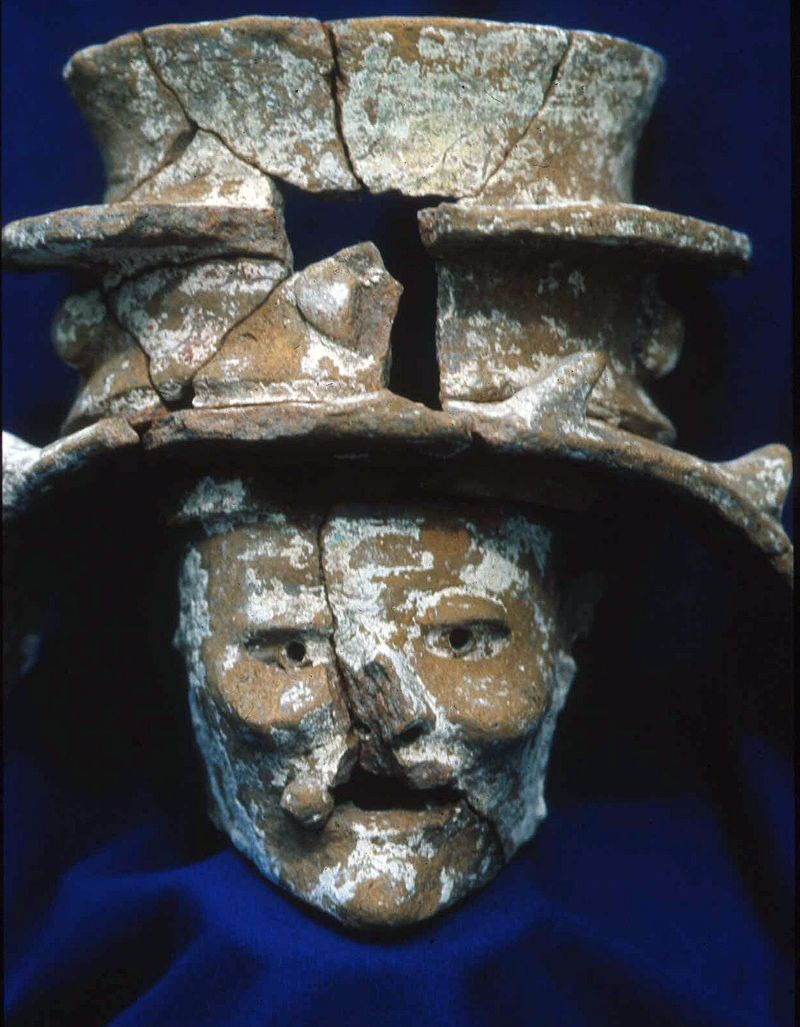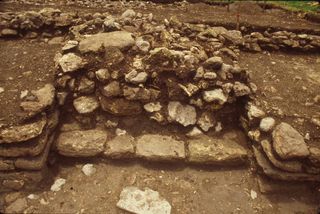Ancient Mayan Altars, Sculpted Artwork Discovered in Guatemala

A team of archaeologists in Guatemala has discovered a council house dating back about 700 years with altars, incense burners and sculpted images of animals.
Located at the site of Nixtun-Ch'ich' in Petén, Guatemala, the house has "two colonnaded halls constructed side by side. The halls were decorated with sculpted [reptile], parrot and turtle imagery," writes Timothy Pugh, a professor at Queens College in New York, in a summary of a talk he recently gave at the Society for American Archaeology annual meeting in Austin, Texas.
A Mayan group called the Chakan Itza would have used this council house as aplace to hold meetings, worship gods, make alliances and officiate marriage ceremonies. [See Photos of the Mayan House and Artwork]
"Basically almost every political and religious ritual would have been held there," Pugh told Live Science in an interview. The leaders who gathered there would have held power in the community and perhaps the broader region. Among the artifacts is an incense burner showing the head of Itzamna, who was the "shaman of the gods," Pugh said.

The reptile and parrot sculptures once adorned the walls of the hallways, while two altars each had a sculpted turtle on them, Pugh said. Among the incense burners are examples that appear to be shaped like a seedling ceiba tree, which held importance to the Maya and today is the national tree of Guatemala.
Center of a community
The council house at Nixtun-Ch'ich', about 50 by 50 meters (164 by 164 feet), would have been part of a flourishing settlement. Archaeologists in previous expeditions found a giant ball court at the site, the second largest from the Mayan world, Pugh said. The largest Mayan ball court is at Chichen Itza, a city the Chaken Itza believed their ancestors had migrated from, Pugh said.
Sign up for the Live Science daily newsletter now
Get the world’s most fascinating discoveries delivered straight to your inbox.
The council house appears to have been in use between about A.D. 1300 and 1500, Pugh said, adding that it could have been in use for some time after 1500. Around that time, Pugh believes, the Chakan Itza decided to destroy the council house and move the seat of power — something they would likely do on a regular basis.
"The Maya paid close attention to time and calendars," Pugh said. "After a certain cycle of time they would move the ruling seat to a new location."
In order to destroy the council house, "they basically conducted a ritual that cancelled out the power of this space," Pugh said. "They destroyed the altars and they covered the building" with a large amount of dirt, he said.
A living legacy
The Spanish would conquer the Peténregion of Guatemala by the end of the 17th century. The Itza people suffered many casualties from the conquest and European diseases to which they lacked immunity.
However the Itza, along with other Mayan people, persevered and continue to live on today. Many of the Itza now speak Spanish, although the Itza language is still spoken by a small number of individuals.
The research was funded by the National Science Foundation.
Follow us @livescience, Facebook & Google+. Original article on Live Science.

Owen Jarus is a regular contributor to Live Science who writes about archaeology and humans' past. He has also written for The Independent (UK), The Canadian Press (CP) and The Associated Press (AP), among others. Owen has a bachelor of arts degree from the University of Toronto and a journalism degree from Ryerson University.









